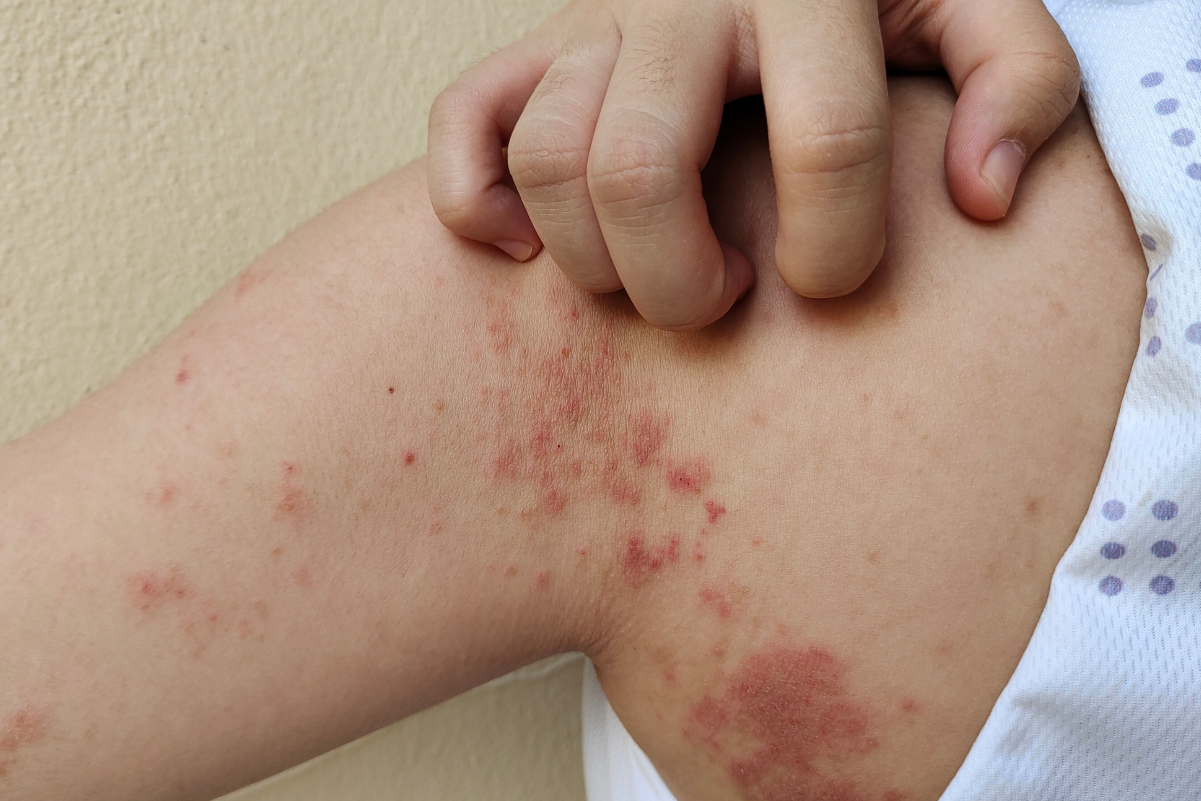Impetigo is a very common and contagious skin infection- here’s what you need to know about this condition!
What is impetigo?
- Impetigo is the Latin word for “scabby eruption.” Much like a sudden attack, this type of bacterial infection can appear on the skin quite quickly.
- Impetigo is a contagious bacterial infection that affects the epidermis, which is the topmost layer of the skin.
What causes impetigo?
- The bacterium that most commonly causes impetigo is called staphylococcus aureus. Less commonly, streptococcus group A can cause impetigo, and in some cases both bacteria can be culprits at the same time.
- Impetigo can develop when bacteria has an entry point into healthy skin through small scrapes, cuts, bug bites, or eczema patches. Anything that causes skin irritation can cause a defect in your healthy skin barrier, and that’s the way bacteria can invade.
- Impetigo is contagious, meaning it can spread quite easily through close contact.
Who is at risk for impetigo?
- Impetigo can occur in anyone at any age, but it’s most commonly seen in children ages 2-5 years old.
- This infection occurs more often in warm, humid conditions.
- Impetigo occurs more commonly in crowded living conditions, where it can easily spread from person to person.
What does impetigo look like?
- Impetigo shows up as red bumps on the skin, typically on the face, arms, or legs.
- The bumps eventually blister and break open, causing open sores and scabs with a distinctive golden yellow or brown crust.
- Impetigo commonly causes skin irritation (itching, tenderness) and lymph node swelling.
- Impetigo does not usually cause a fever, so if this is present, or if there is severe pain, worsening redness and swelling, or a loss of appetite, it could be a sign of a more serious infection.
Is there testing for impetigo?
- Usually, your dermatology provider can diagnose impetigo based on looking at the affected parts of your skin.
- In some cases, your dermatology provider may do a bacterial culture by taking a swabbed sample of drainage from a blister. This can help confirm the presence of bacteria and help make treatment decisions in more complicated circumstances.
How do you treat impetigo?
- To treat impetigo properly, it’s best to gently remove thick crust on the affected area because bacteria is colonizing in it.
- Gently wash the affected area with warm water, a clean washcloth, and an antibacterial soap. Gentle skin care is better than overaggressive scrubbing.
- Your dermatology provider will prescribe a prescription-strength antibacterial cream or ointment, usually for at least 5 days.
- If you have widespread impetigo, big blisters, lack of improvement with standard treatment, or signs of a deeper skin infection, your dermatology provider may decide they want to treat with antibiotic pills.
- Whether you are given topical treatment, pill treatment, or both, it’s important to use as directed for the prescribed amount of days, even if the impetigo seems to clear up right away. You want to treat impetigo completely to ensure it does not come back.
How do you prevent the spread of impetigo?
- Because impetigo spreads so easily from person-to-person by direct skin contact, hand hygiene is the most important thing you can do for prevention. Wash your hands with soap and water right after touching anyone who has the infection. An alcohol-based hand rub can be an okay backup if you are not near a sink.
- Do not share personal items like clothing, towels, combs, or razors, since bacteria can live on these items for a period of time.
- Wash towels, linens, and sheets in hot water and dry on high heat to kill bacteria.
- Cover affected areas with impetigo to prevent it from touching other areas of the body (on yourself or others). This can also help you to remember to stop touching the affected area.
- Only use disposable tissue paper to blow your nose, and teach your kiddos to do the same. Sneeze into the crook of your arm. Wash your hands after sneezing or blowing your nose.
If you suspect you have impetigo, or if you have been dealing with repeated episodes of it without sustained relief, an appointment with a dermatology provider for a closer look. We are happy to assist with any of your skin care needs!





